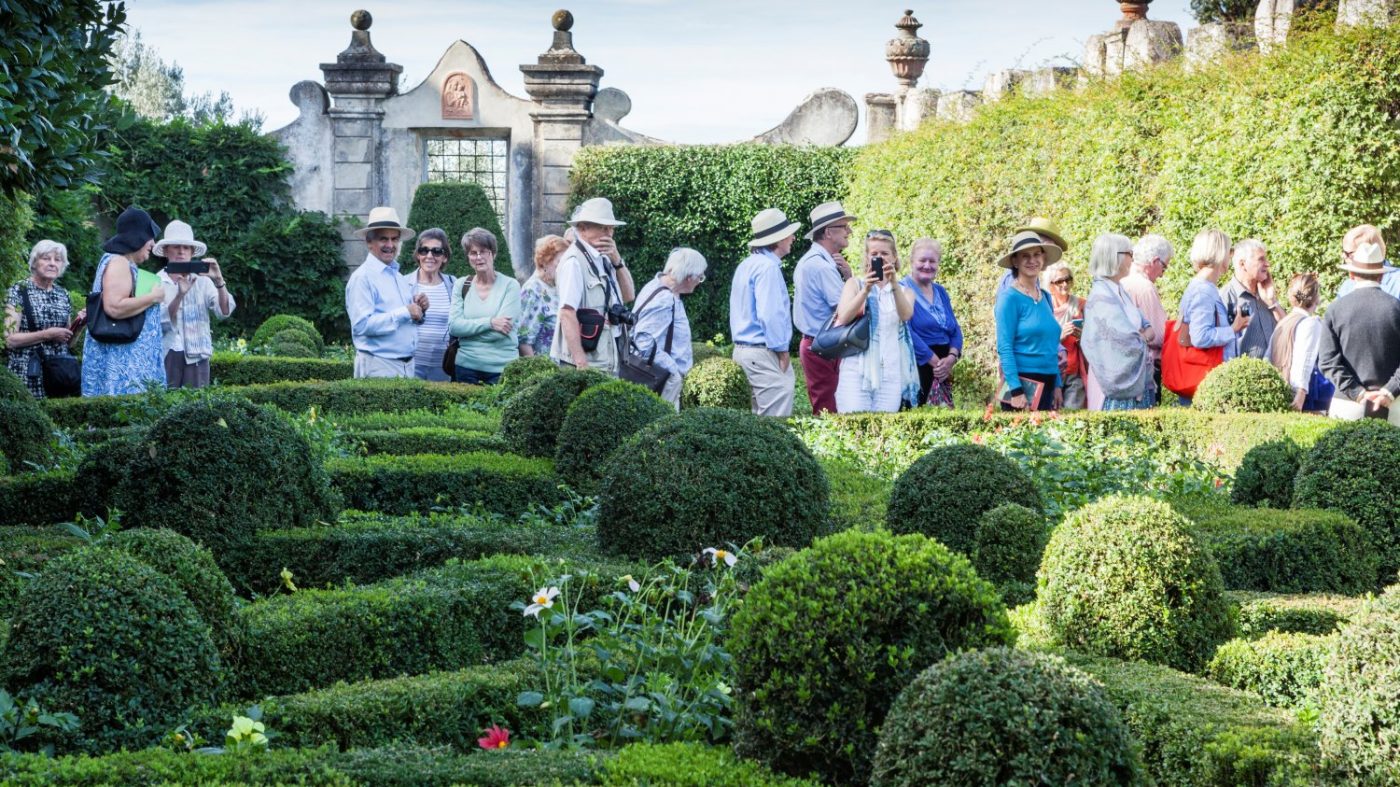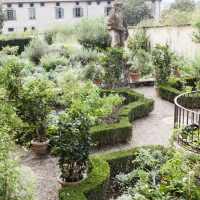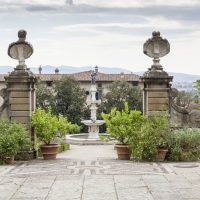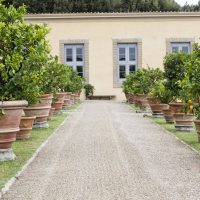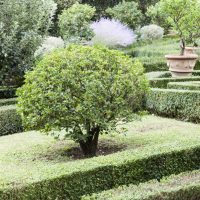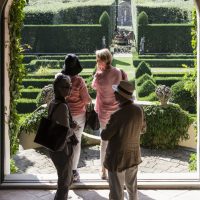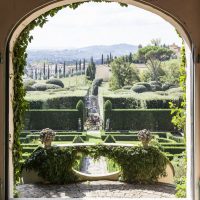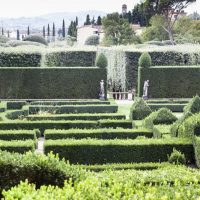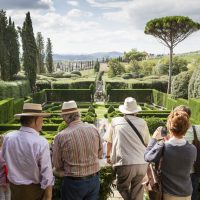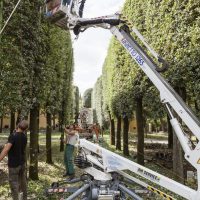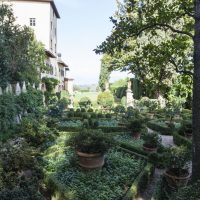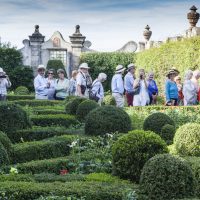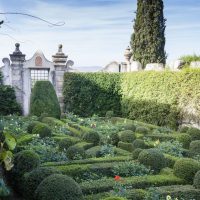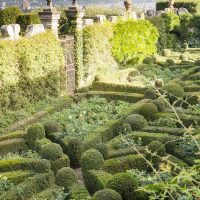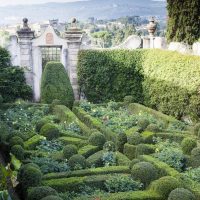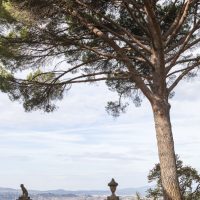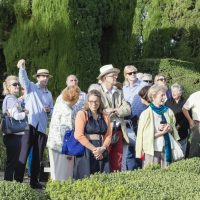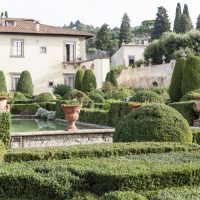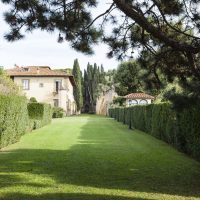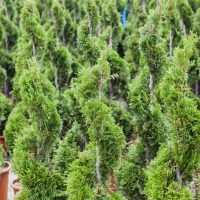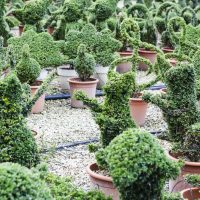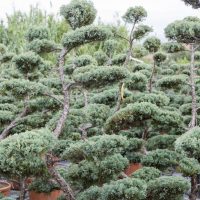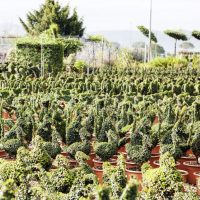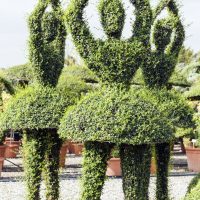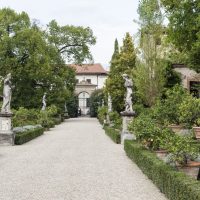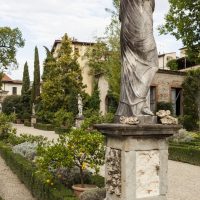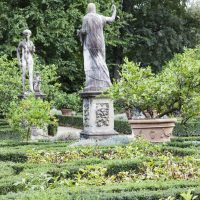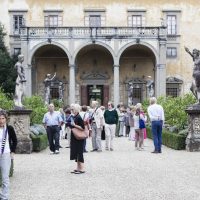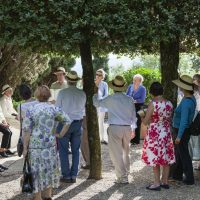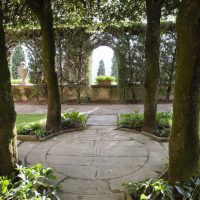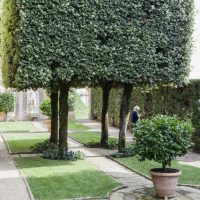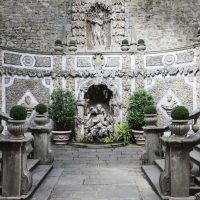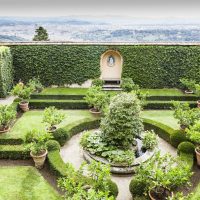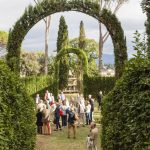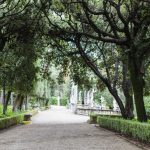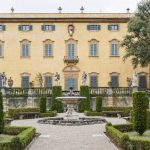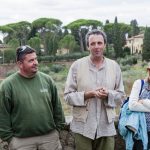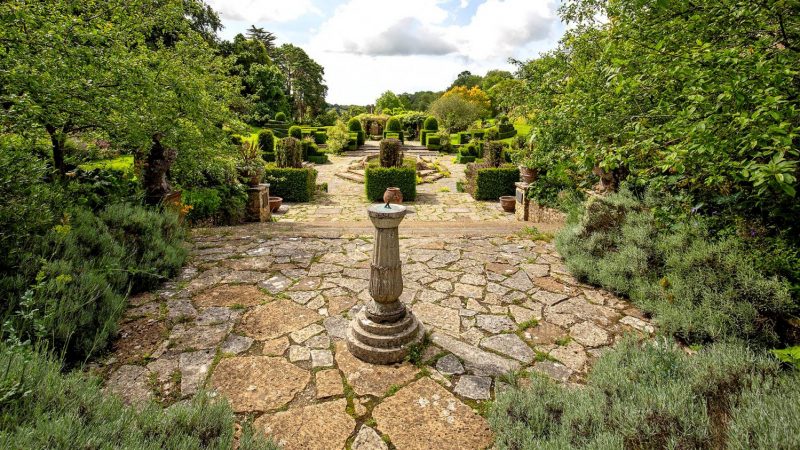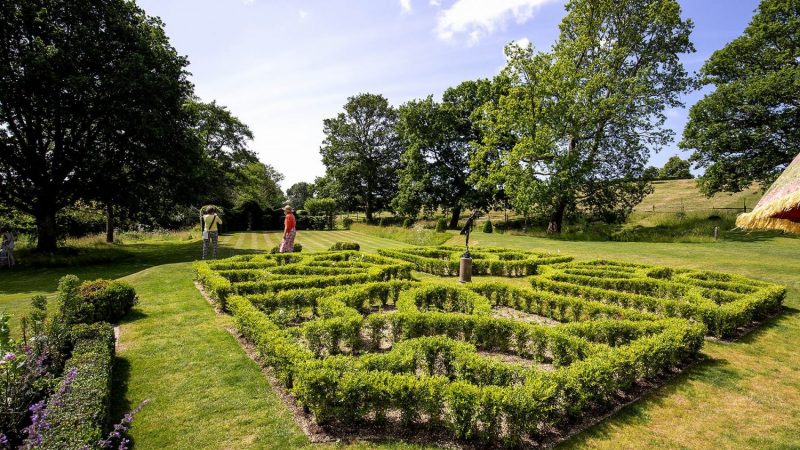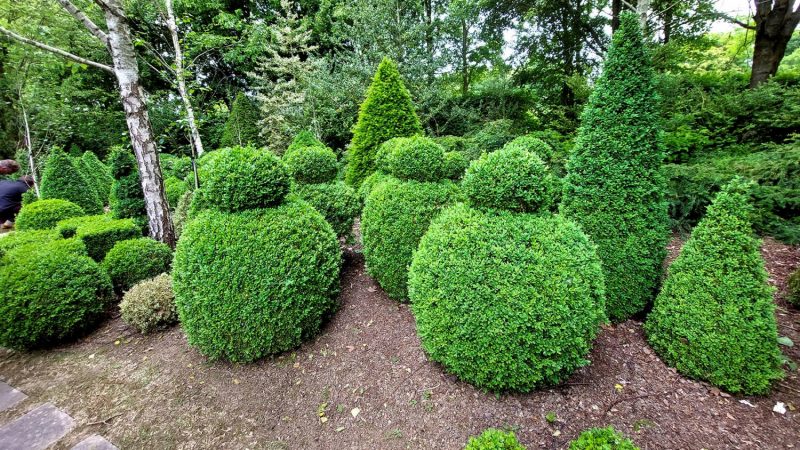EBTS goes to Tuscany
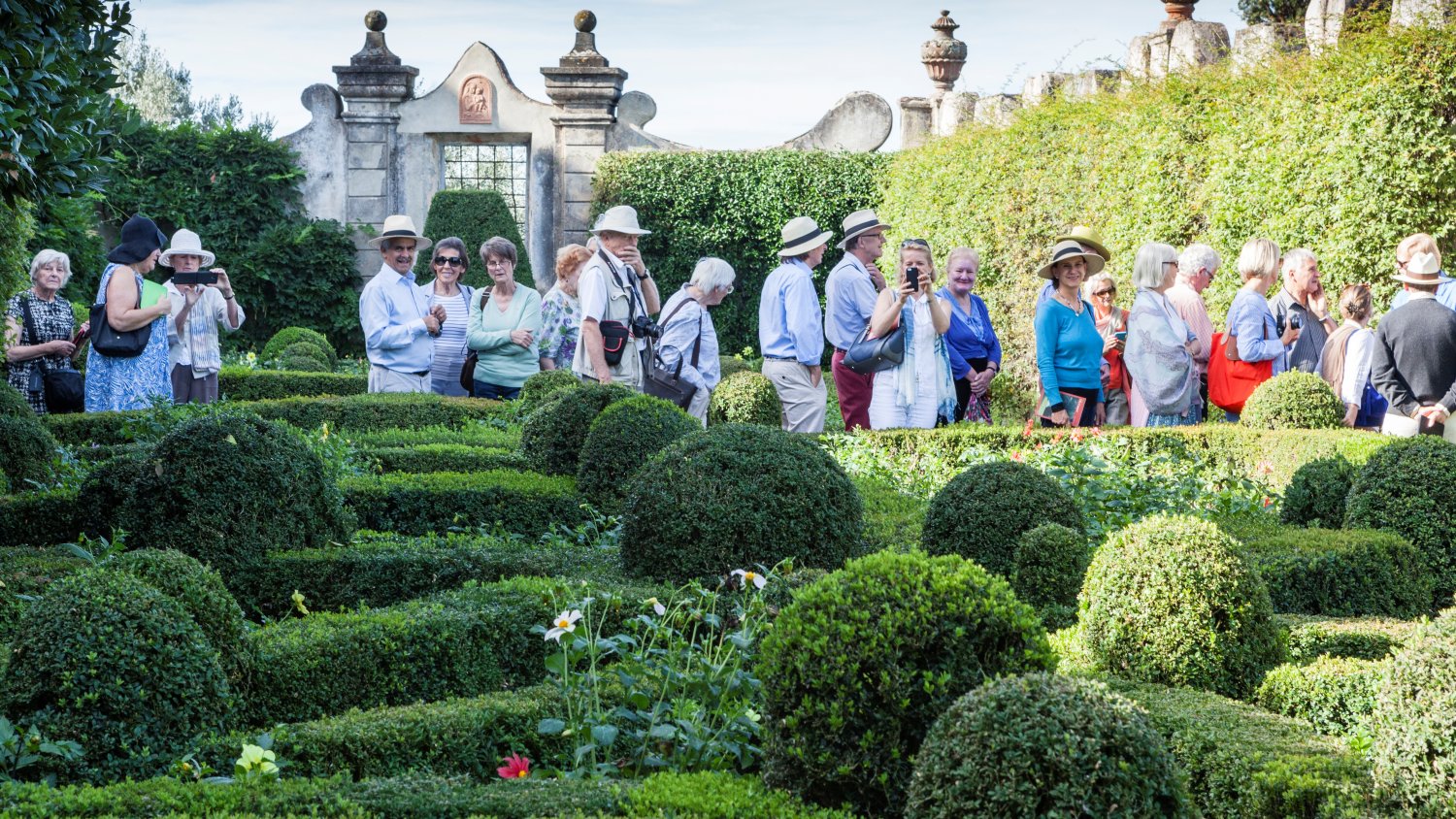
The late-summer trip was carefully designed to include some of the most beautiful gardens in Florence, all incorporating fine examples of box and topiary. As part of the trip EBTS also visited Romiti & Giusti near Lucca, a specialist nursery exporting topiary sculptures all over the world: here you could order any topiary form, from teacup to tennis player. The gardens visited included Villa Capponi, Villa Gamberaia, Villa I Tatti, Villa Medicea di Castello, Le Balze, Palazzo Corsini & La Pietra.
This garden tours were hosted by Nick Dakin-Elliot, Garden Manager of La Pietra, with tour assistant, Patty Shone. EBTS was privileged to have Nick as tour host: having been a Senior Lecturer at Pershore College of Horticulture for a decade. Nick arrived in Florence, Italy, with a one year contract to “get the restoration of the garden at Villa La Pietra started“. More than fifteen years later the restoration continues with Nick at the helm. He has long been interested in topiary and has studied its commercial production in England, South Africa, America, and – of course – Italy. For him, the perfect garden contrasts the formal structure that hedges and topiary provide with the romantic touch of profuse planting; a style not in the vanguard of garden design but a very English look that is admired the world over.
During the stay, the group was based in the recently refurbished 4 star, Hotel Balestri situated in the historic Santa Croce district and overlooking the River Arno, just a few minutes’ walk from Ponte Vecchio and the Palazzo delta Signoria.
The tour was orgainsed by Boxwood Tours on behalf of EBT UK.
The pictures below are by Charles Hawes, EBTS member and professional garden photographer. If you are interested in High Resolution images of these gardens or others from his collection please visit www.veddw.com and click on the link to Charles’ Photography for further details.
Villa Medicea di Castello
C16th garden designed by Tribolo and built for Cosimo de Medici.
- The Secret Garden. Hedges of Box
- Citrus in terracotta pots. Hedges of box. View to the villa and fountain
- Citrus in terracotta pots
- Hedges of Box
Villa I Tatti
Garden designed by Cecil Pinsent for Bernard Berenson. Built between 1911 and 1919 and considered one of the first examples of Renaissance Revival gardens – Owned by Harvard University.
- Visitors admiring the Green Garden
- View from the limonaia to the Green Garden
- The Green Garden. Hedges of box. Clipped Quercus Ilex (Holm Oak) behind
- Visitors admiring the Green Garden
- Cutting the Quercus Ilex (Holm Oak) in the Bosco wth cherry pickers
Villa Capponi
Started at the end of the C16th for Ginodi Capponi. Purchased in 1882 by Lady Elizabeth Scott, grandmother to the late Queen Mother (who visited the garden). At the beginning of the C20th British architect Cecil Pinsent was commissioned to add the swimming pool garden.
- View onto the Lemon Garden, hedges of box & citrus in terracotta pots
- Visitors in The Secret Garden
- The Secret Garden - Hedges of box with planting of Dahlias
- The Secret Garden - Hedges of box with planting of Dahlias
- The Secret Garden - Hedges of box with planting of Dahlias
Villa Gamberaia, Settignano, nr Florence
C15th villa, main garden created in early C18th with several alterations in the C19th, owned by the Marchi family since early 1950’s.
- Pinus pinea by Terrace by the villa with view over Florence
- Group of visitors in the Water Parterre, led by Nick Dakin-Elliot (gesturing)
- View to the Villa from The Water Parterre with hedges of box & mounds of Taxus baccata and plants in terracotta pots
- View to the Villa from inside the Theatre of the water Parterre, hedges of box & mounds of Taxus baccata
- View up the bowling green to the Villa with hedges of Box
Romiti and Giusti
Romiti and Giusti wholesale topiary nursery, Pistoria.
- Spirals of Cuprocyparis leylandii
- View across the nursery with mostly topiary of small animals in Ligustrum delavayanum
- Cloud-pruned Cupressusocyparis
- View across the nursery with mostly topiary of small animals
- Figures of ballet dancers in Ligustrum delavayanum
Palazzo Corsini al Prato
Designed by Renaissance architect Bernardo Buontalenti in 1594. Completed in 1620 when it was also added to and altered by Gherado Silvani and now residence of Prince Filipo & Princess Giorgiana Corsini.
- Viale of statues and box hedges with citrus in teterracotta pots
- Viale of statues and box hedges with citrus in teterracotta pots
- Viale of statues and box hedges with citrus in teterracotta pots
- Group visiting the garden
Le Balze
Garden designed by Cecil Pinsent in 1912 for American Charles Augustus Strong.
- Visitors in the entrance to the garden
- Entrance room - Clipped Quercus Ilex
- Entrance room - View through Quercus Ilef and hedge of Cupressus sempervirens (Italian cypress) to the city with white perlagoniums in terracotta pot
- Entrance room - Clipped Quercus Ilex and hedge of Cupressus sempervirens (Italian cypress)
- The Grotto Le Balze
- The Winter Garden - Citrus in Terracotta pots with hedges of box. View to side of house to the city
La Pietra
C15th Mansion with renaissance garden altered in C19th. Present grounds werelaid out around 1910 for Arthur Acton by French garden designer Henri Ducheme. Further restoration took place in 1915. Bequethed in 1994 by Sir Harold Acton to New York University and is currently being restored to a plan of Kim Wilkie’s under direction of British gardener Nick Dakin-Elliot.
- View through arches of Cupressus sempervirens in the lower terrace to Nick Dakin-Elliot with visiting group
- Avenue of Quercus Ilex (Holm Oak) between terraces
- View of the back of the villa from the Upper Terrace (prima Vasca). Hedges of buxus. Pool. Columns of Irish yew with statues on walls
- View from edge of the Upper Terrace (Prima vasca) through hooped hedge of Cupressus semervirens to the Tempietto. Hedges and balls of buxus with statues of dogs on the walls
- Head gardener Nick Dakin-Elliot

